ESG Investing Comes of Age
How religious conviction and changing public sentiment led to the rise of investing for values and what companies have done to keep up.
Sustainable investing goes by many names, but it isn’t a passing fad or a new trend—it dates back decades and has ascended quickly in the past 10 years. What started as a rush by certain investors away from “sin” stocks in the name of religious beliefs has evolved to a place where, more broadly, companies are seeing the risk of not tending to environmental, social, and governance issues.
Now corporations face unprecedented risk related to the climate crisis and its environmental impact, their use of water and other natural resources, how they treat workers throughout their supply chain, and the safety and usefulness of their products. Increasingly, many investors are eager to assess and measure companies’ progress in addressing those risks.
Thanks to the Internet, this information is widely available to experts and nonexperts alike. And a diverse profile of investors of all age groups is paying attention, contrary to the notion that ESG investing is strictly a millennial proclivity. With a changing climate and gun violence capturing public attention, investing sustainably can be both the personal act of putting money behind values and an act of corporate preservation to protect the future of a company.
How did we get here? See how this approach has grown since inception.
Investing in the Times
What we now refer to as sustainable investing began with religious groups such as Muslims, Quakers, and Methodists who set ethical parameters on their investment portfolios. Muslims used this method to develop investments that comply with Islamic law, or Shariah, which includes various prohibitions such as weapons. The Methodists and Quakers were responsible for the launch of the first ethical unit trusts in the United States and United Kingdom; they built investment vehicles using negative screening, avoiding businesses that dealt in alcohol, tobacco, and gambling.
Ethical codes and religious beliefs shaped the earliest instances of sustainable investing; the desire to invest consistently with personal values guides what sustainable investing would eventually become.
The Innovators of Socially Responsible Investing
1970s
Activism increases around U.S. involvement in the Vietnam War, particularly over the use of chemical weapons. Shareholders organize letters and resolutions against the production of napalm and Agent Orange. The anti-war movement further propels practices of sustainable investing, referred to as socially responsible investing and still built on exclusionary principles. Public sentiment leads to the establishment of the first sustainable mutual funds. Strong voices for responsible corporate practices speak up and begin to influence the global discourse.
1971
Pax World launches the first sustainable mutual fund (PAXWX). It’s still an investable fund today. Two United Methodist ministers—Luther Tyson and Jack Corbett—looking to avoid investing church dollars in companies contributing to the Vietnam War, founded the groundbreaking Pax World fund. They want to align their investments with their values and urge companies to adhere to a standard of social and environmental responsibility.
1972
Journalist Milton Moskowitz constructs a list of “socially responsible stocks,” published in Business & Society, to track performance against broad market indexes, including the first sustainable funds. (Townsend 2017)
1977
The Rev. Leon Sullivan, a clergyman and civil rights leader, develops a code of conduct for companies, dubbed the Sullivan Principles. These principles aim to promote corporate social responsibility and to apply economic pressure in South Africa in response to the apartheid system of racial segregation. A quarter century later, the United Nations adopts an updated version of Sullivan’s corporate code of conduct for companies as part of the United Nations Global Compact.
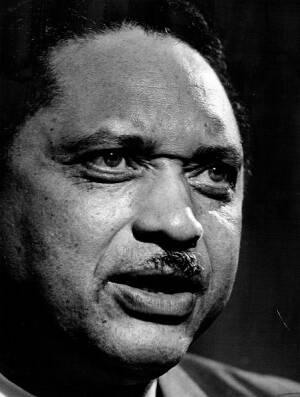
Legislating Corporate Responsibility
1980s
The anti-apartheid movement advocating for divestment from South Africa gains critical mass. Shareholder activism pressures corporate involvement, and the push reaches the U.S. government, translating to public policy. Environmental concerns continue to propel growth for sustainable investing. The establishment of forums and key proclamations in the 1980s help to formalize the process, but the Exxon Valdez oil spill in Alaska puts the U.S. at a crossroads with fossil fuel companies.
1984
U.S. Sustainable Investing Forum is founded.
1986
The U.S. Congress passes the Comprehensive Anti-Apartheid Act, banning new investment in South Africa.
According to Calvert Investments, it becomes the first investment firm to sponsor a shareholder resolution tied to a social issue.
1988
In response to growing concerns over the burning of fossil fuels and the rise of global temperatures, the Intergovernmental Panel on Climate Change is jointly established with the World Meteorological Organization and United Nations Environment Programme.
1989
In the face of the Exxon Valdez oil spill in Prudhoe Bay, Alaska, activists’ efforts lead to the founding of the Coalition of Environmentally Responsible Economies, or Ceres. It brings together investors, business leaders, and public-interest groups to speed the adoption of sustainable business practices and the transition to a low-carbon economy.
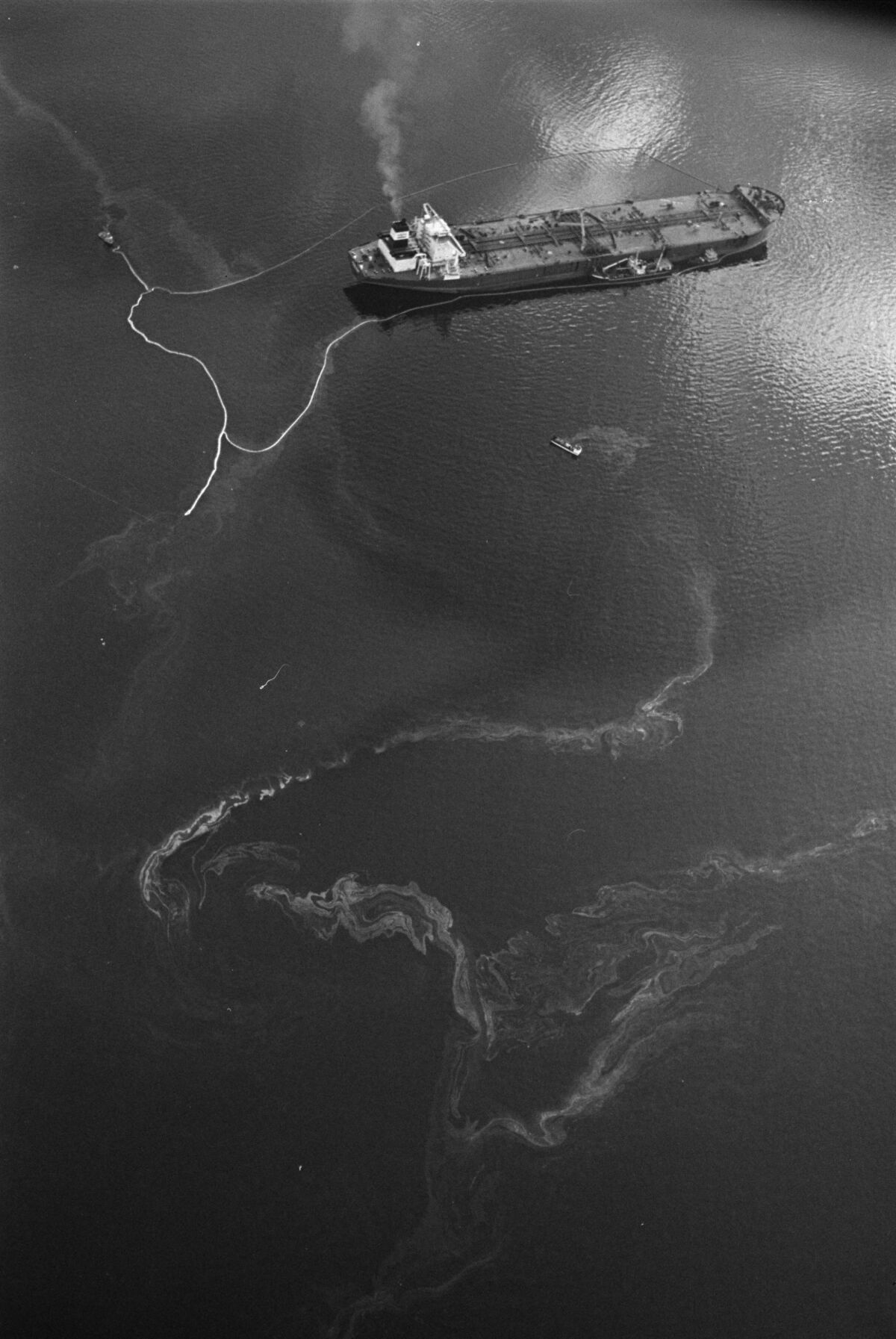
A Global Call to Action
1990s
Awareness of a warming planet continues to grow globally with the signing of the Kyoto Protocol, an agreement among nations to reduce carbon emissions. But sustainable-investment options are growing modestly; the selection of funds is limited. They employ a mix of negative-screening and positive-screening practice also known as best in class, which stems from growing notions of corporate responsibility, prompting consideration of a company’s governance practices relative to its industry peers.
1990
The Domini 400 Social Index launches. Now named MSCI KLD 400 Social Index, the Domini Index is the first capitalization-weighted index built to track sustainable investments.
1992
The United Nations holds the Conference on Environment and Development, a global summit to discuss the intersection of economic development and environmental protection.
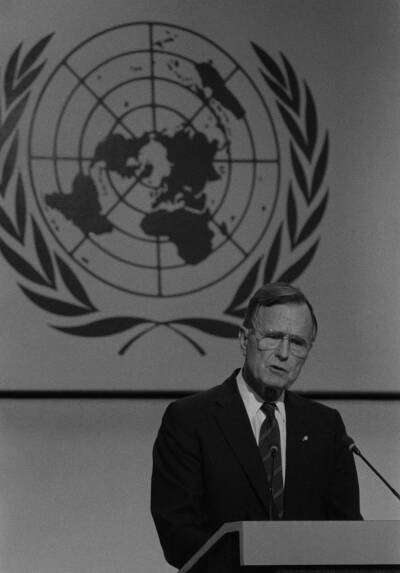
1994
26 sustainable funds are available to investors, with assets roughly around $1.9 billion.
1997
The Kyoto Protocol convenes world leaders to set goals on addressing global warming.
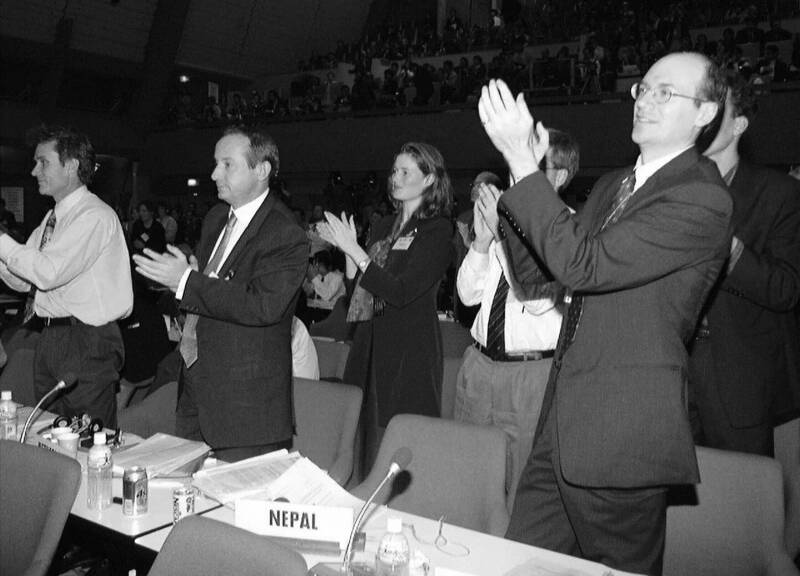
The Education of ESG
2000s
Sustainable investing continues to grow globally, propelled by international organizations like the United Nations. Kofi Annan, then U.N. secretary general, launches the Global Compact, built on the Sullivan Principles, to encourage integration of environmental, social, and corporate governance into capital markets. The initiative coins the term ESG investing. Later, the intention of sustainable investing would shift again—this time toward focused investments that are aimed at gaining influence or having impact on issues that investors care about.
2000
Annan launches the Global Compact initiative—which is a voluntary, corporate-citizenship effort that’s based on a set of human rights, labor, environmental, and anticorruption principles.
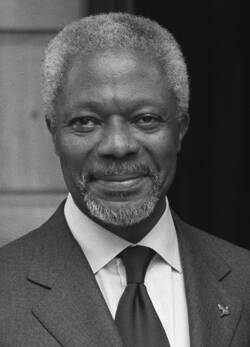
The Global Reporting Initiative launches and provides companies with international, independent standards on how to communicate their impact on issues such as climate change, human rights, and corruption.
2004
The Global Compact produces the landmark report “Who Cares Wins,” providing recommendations on how to incorporate ESG issues into analysis, asset management, and securities brokerage. Today, more than 12,000 companies are Global Compact signatories.
2006
The United Nations’ Principles for Responsible Investment is launched, an effort focused on encouraging further development of sustainable investing. PRI has at present gained more than 2,900 signatories from asset managers and institutional investors.
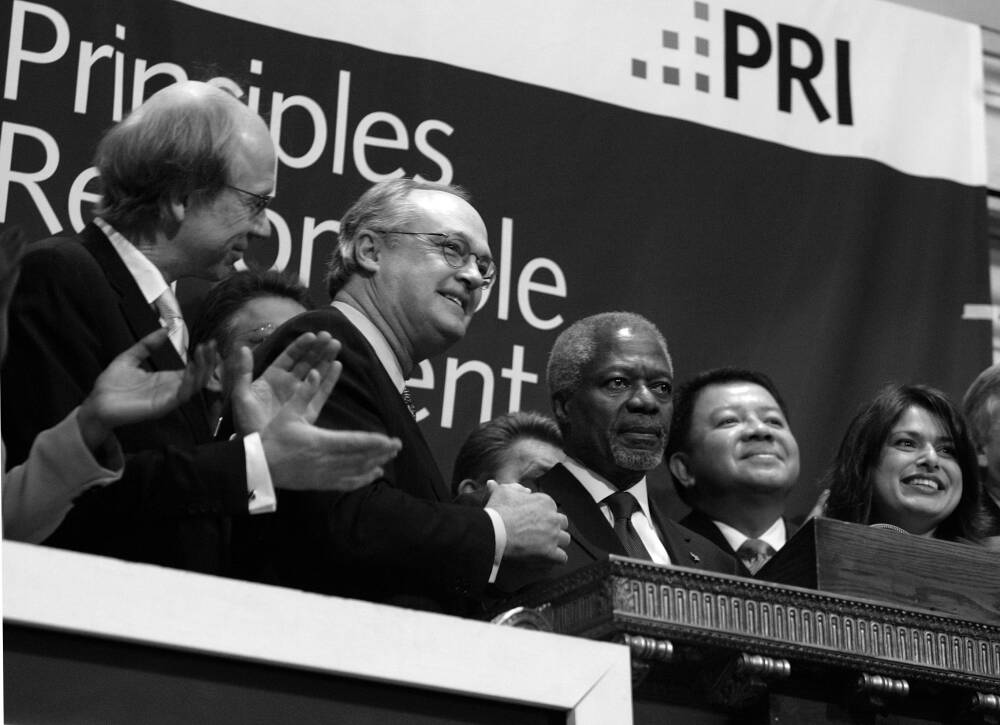
2009
The Global Impact Investing Network is launched. Born out of a Rockefeller Foundation meeting, the network spurs the idea of impact investing. This adds an influential element to investing, in addition to personal values as purpose. These focused investments aim to create an impact on society that wouldn’t otherwise happen without the investment.
Putting ESG Into Action
2010s
As issues like climate change, labor practices, and environment degradation come to light, consumers are making purchasing decisions on these sustainability issues. It all adds up to great expectations for public companies to be good stewards of the environment, to attend to the well-being of all their stakeholders, and to govern themselves in an ethical and transparent way. ESG investments proliferate. But, as a developing practice, many methods are labeled “sustainable,” and attempts to further regulate and construct standards continue.
2011
The Sustainability Accounting Standards Board forms with a mission to establish industry-specific standards for corporate reporting on ESG issues, aiming to help companies understand how to report these metrics.
California, Washington, and New York state governments require disclosures on climate risk by insurers operating there.
2015
Paris Agreement is written and formed during the United Nations Framework Convention on Climate Change, as world leaders come to consensus in combating climate change and adapting to its impacts.
The U.S. Department of Labor rules that pensions and plan sponsors can invest in socially responsible investments, so long as the investment is appropriate for the plan and economically and financially equivalent with respect to the plan’s objectives, return, risk, and other financial attributes as competing investment choices.
2016
CalPERS, the largest public pension fund in the U.S., adopts a five-year plan to incorporate ESG principles into its investment process.
The Paris Agreement officially goes into force when 55 nations representing at least 55% of global emissions formally join. At present, more than 187 countries have ratified the Paris Agreement.
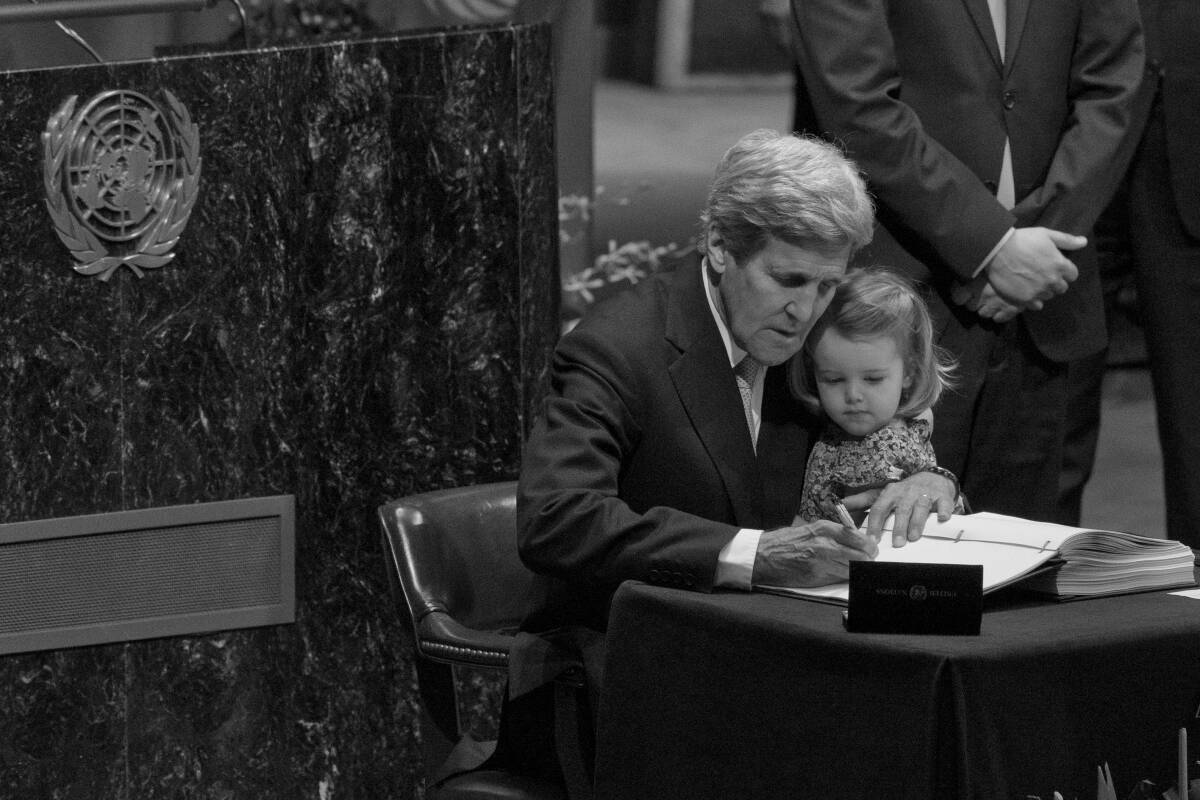
2018
BlackRock founder and CEO Larry Fink publishes his annual letter to CEOs urging companies to position the long-term profitability of their businesses by keeping their focus on the role of the corporation in society. Companies focused on minimizing negative environmental and social impacts and accentuating positive ones will be rewarded by increasingly aware customers, will protect their brand, and will attract top talent, enabling them to better navigate the transition to an increasingly low-carbon and digital economy, Fink writes.
The European Commission presents its sustainable finance action plan; it includes proposals for regulation of disclosures on sustainable investment and sustainability risks.
2019
Flows into U.S. sustainable funds top $20 billion as of December. That’s more than quadruple the previous annual record for net flows for sustainable funds set in 2018.
Nearly 500 actively-managed funds in the U.S. add ESG criteria to their prospectuses, formally conveying to investors that they may use ESG to inform their investment decisions.
ESG During a Pandemic and Social Unrest
2020s
The coronavirus pandemic shook investors and markets to their core in 2020. The killings of George Floyd and other Black Americans highlight the need to address systemic racism. Evidence for climate change becomes clearer with increased frequency and devastation from natural disasters. Investors looking to make a difference with their money have sought ESG funds in record-breaking fund flows, and fund companies have noticed, leading to record-setting ESG fund launches.
2020
Global sustainable funds pull in $45.6 billion during the first quarter, compared to an outflow of $384.7 billion for the overall fund universe amid the coronavirus pandemic market sell-off.
In Europe, flows into ESG funds add up to EUR 233 billion. European asset managers launch a record number of 505 new ESG funds and repurposed more than 250 conventional funds, bringing the total European sustainable funds universe to 3,196 funds.
In the U.S., sustainable funds attract a record $51.1 billion in net flows, more than twice the previous record set in 2019. Sustainable fund flows account for nearly one fourth of overall flows into funds in the U.S.
2021
In his annual letter to CEOs, BlackRock founder and CEO Larry Fink argues that no company’s business model won’t be profoundly affected by the transition to a net-zero economy. He asks companies to a disclose a plan for how they will be compatible with a net-zero economy and to have this plan reviewed by their board of directors.
Under the Biden administration, the U.S. Department of Labor says it won’t enforce a Trump-era rule that limits the use of ESG funds in retirement plans regulated under ERISA, including 401(k) plans.
Where We Are Today
Sustainable investing continues to take hold. Read about our latest ESG data, research, and analysis.
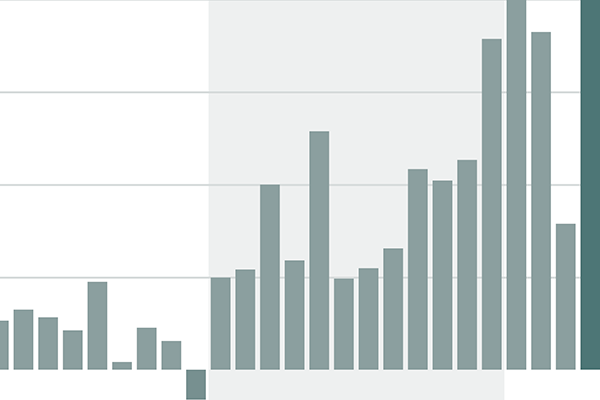
Flows for U.S. Sustainable Funds Reach New Heights
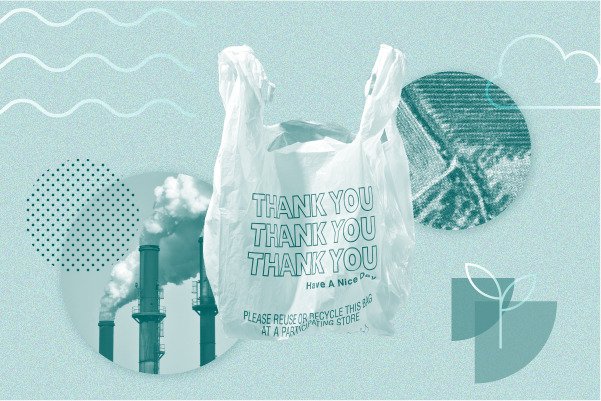
10 Sustainable Investing Themes for 2021

4 Easy Steps to Finding a Suitable ESG Fund
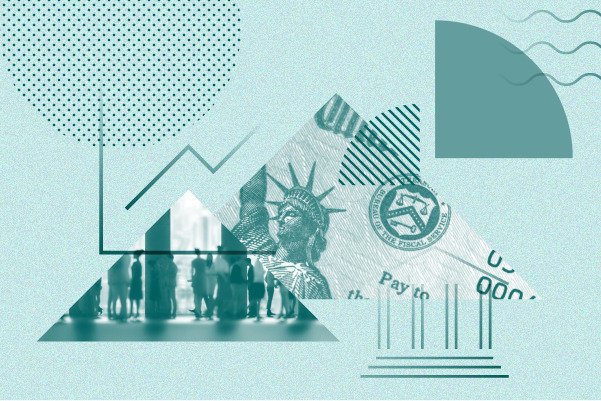
Why Sustainable Investors Should Watch the SEC
Contributors
Jon Hale and Bridget Ginty contributed to this report.References
Townsend, B. 2017. “From SRI to ESG: The Origins of Socially Responsible and Sustainable Investing.”Production Credits
- Denver Post/Getty Images, showing The Rev. Leon Sullivan.
- AP Photo/John Gaps III, showing crude oil from the tanker Exxon Valdez.
- AP Photo/Michos Tzovaras, showing U.S. President George H.W. Bush at a session of the United Nations Conference on Environment and Development.
- The Asahi Shimbun/Getty Images, showing representatives applauding as the Kyoto Protocol is adopted.
- AP Photo/PA, showing U.N. Secretary General Kofi Annan.
- AP Photo/Richard Drew, showing the launch of the Principles for Responsible Investment.
- AP Photo/Mary Altaffer, showing U.S. Secretary of State John Kerry signing the Paris Agreement.


